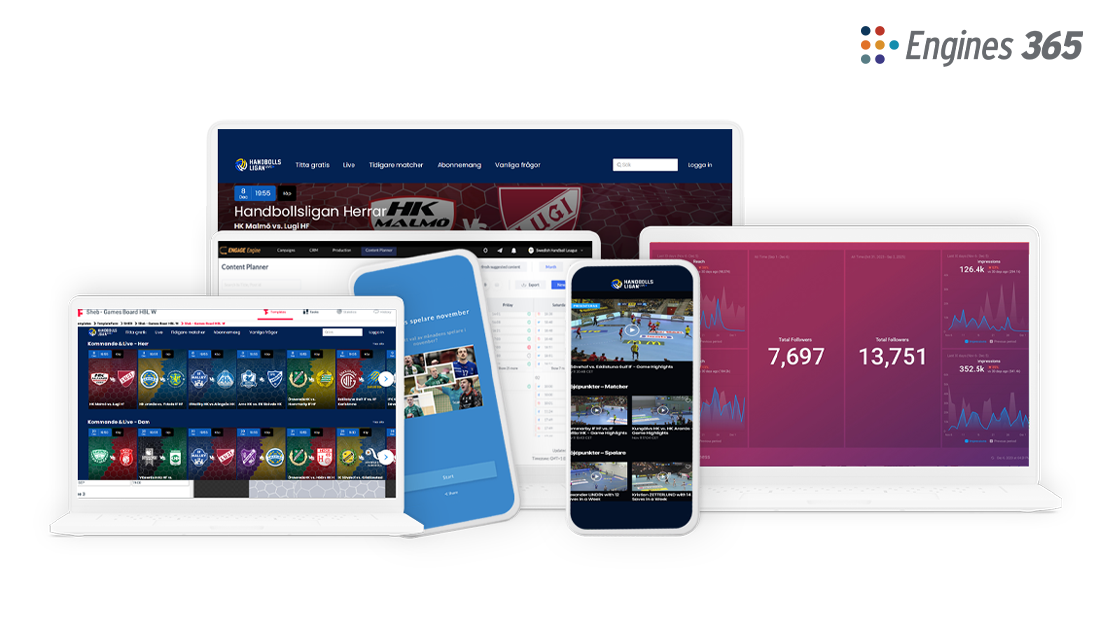Using fan data effectively is a lot like making a great meal. You could have access to the highest quality ingredients in the world, a professional kitchen and all the gadgets you want. But unless you’re using them in the right way, you’re going to end up with a poor experience, annoyed dinner party guests and a lot of washing up.
Drawing a parallel in sport, you could have the most advanced technology and the most extensive fan data. Yet, without proper understanding and use, it's like having an undercooked meal that leaves your fans - the guests - unsatisfied. In an increasingly competitive sports landscape, fan personalisation has become a must-have element in ensuring fan engagement. Stakeholders within the sports industry are continually challenged to use technology to create individualised fan experiences at scale. That is why understanding the value of first-party and zero-party data cannot be overstated. First-party data is generated directly from fan interactions, offering deep insights into user behaviour and preferences. Zero-party data is voluntarily shared by the fans themselves, providing even more specific, personalised information about them.
Understanding your fans is a big step towards understanding the data behind them. Together, these two data types can be harnessed to customise fan experiences and boost engagement. But what else can rightsholders do? It was the topic of discussion at our recent SPOBIS masterclass that you can watch below. However, if you’re pressed for time these tips will help you on your way.
Using fan data to improve content creation
What do your fans watch? How are they engaging with content? What makes them tick? All of this can be surfaced through fan data and drive better content creation. Insights derived from fan engagement data can inform the development of targeted, relevant content, thereby increasing engagement rates.
One innovative solution is the automation of sports content, which uses event data to automate the content creation workflows. The benefits of this approach include more efficient content production and highly personalised content that caters to individual fan interests.
Amplifying content with advocates
Fan data can also help identify and leverage advocates - loyal fans who actively promote the team or sport as well as athletes and organisations. By pairing these advocates with tailored content, organisations can amplify their reach and boost engagement.
The Champions Hockey League, for instance, saw impressive results with this strategy: a 31% increase in total engagements and a 98% rise in video views, demonstrating the power of combining data-driven content with advocacy.
Creating tailored marketing experiences for you and your sponsors
Leveraging fan data, sports organisations can design more targeted and personalised marketing campaigns. These data-driven campaigns have proven more successful than general ones, as they resonate better with fans' individual interests and preferences. Examples include fan activations and geo-location targeting, which have led to greater fan engagement and conversion.
It is something the Portuguese Football Federation managed successfully for its Portugal+ loyalty programme. It spent three months identifying digital fans, bringing in almost 10,000 new fans. It then utilised promotional codes, email newsletters and additional activations, eventually resulting in the team selling all its Euro 2020 tickets.
Furthermore, fans are the reason most sponsors invest in sport, so why not use data to please them also? They will all have their target markets and audiences, even within a sport, and helping guide their sponsorship strategies and helping reach the people they want to talk to will only benefit rightsholders in the long run.
Delivering personalised OTT experiences
OTT platforms offer another avenue to personalise fan experiences. By understanding fan behaviours and preferences, these platforms can provide personalised content, such as tailored video feeds, leading to higher engagement and satisfaction rates.
Ski & Snowboard Live did just that. It used data feedback and viewer preferences to tailor its email marketing to fans individual needs. This saw them increase the average opening rate to 44%, double the industry standard.
Generating new revenue streams
Data-driven strategies also open new revenue streams. By streamlining content creation and marketing workflows, organisations can significantly reduce costs. For example, automated content creation can lower resource expenditure, while data-driven marketing can cut lead generation costs. These savings directly translate into new revenue opportunities.
But it can also see organisations reallocate those resources. This was what SPFL did a few years ago. Utilising content automation gave them more of the world’s most precious commodity: time. They were previously spending five hours preparing content for its social channels, that was reduced to two.
Additionally, fan data can provide new platforms to sponsors. The automatically created content based on viewer’s preferences can be enhanced by adding a specific sponsor to each content piece, based on the compatibility between the fan and the brand. This provides brands with additional exposure, enhancing the digital package.
Identifying monetisation opportunities by rewarding your fans
Finally, fan data offers numerous monetisation opportunities. Insights drawn from fan engagement data can be used to create new products, services, or experiences. Or even better, reward the fans that actively provide information with money-can’t-buy rewards or personalised merchandise. By aligning monetisation strategies with fan preferences, organisations can unlock significant revenue potential.
Fan data is not a new concept, and the best rightsholders have been using it for decades by analysing ticket sales and TV figures. However, with more touchpoints than ever it is becoming a more powerful tool for sports organisations, allowing them to gain valuable insights into their audience and develop engaging experiences for their fans. To tap into this source of information, organisations must develop effective strategies for collecting and utilising fan data. It all starts with setting those business goals. Only then, after understanding the challenges associated with fan data and developing strategies for overcoming them, can organisations leverage data to improve experiences and ultimately drive revenue. Just like a good meal, using data in the right way will ensure fans aren’t left with a bad taste in their mouth.



.jpg?width=2000&height=1333&name=FWC22_FIFA%20World%20Cup%20Qatar_Al%20Thumama_Cameras%20(175).jpg)





